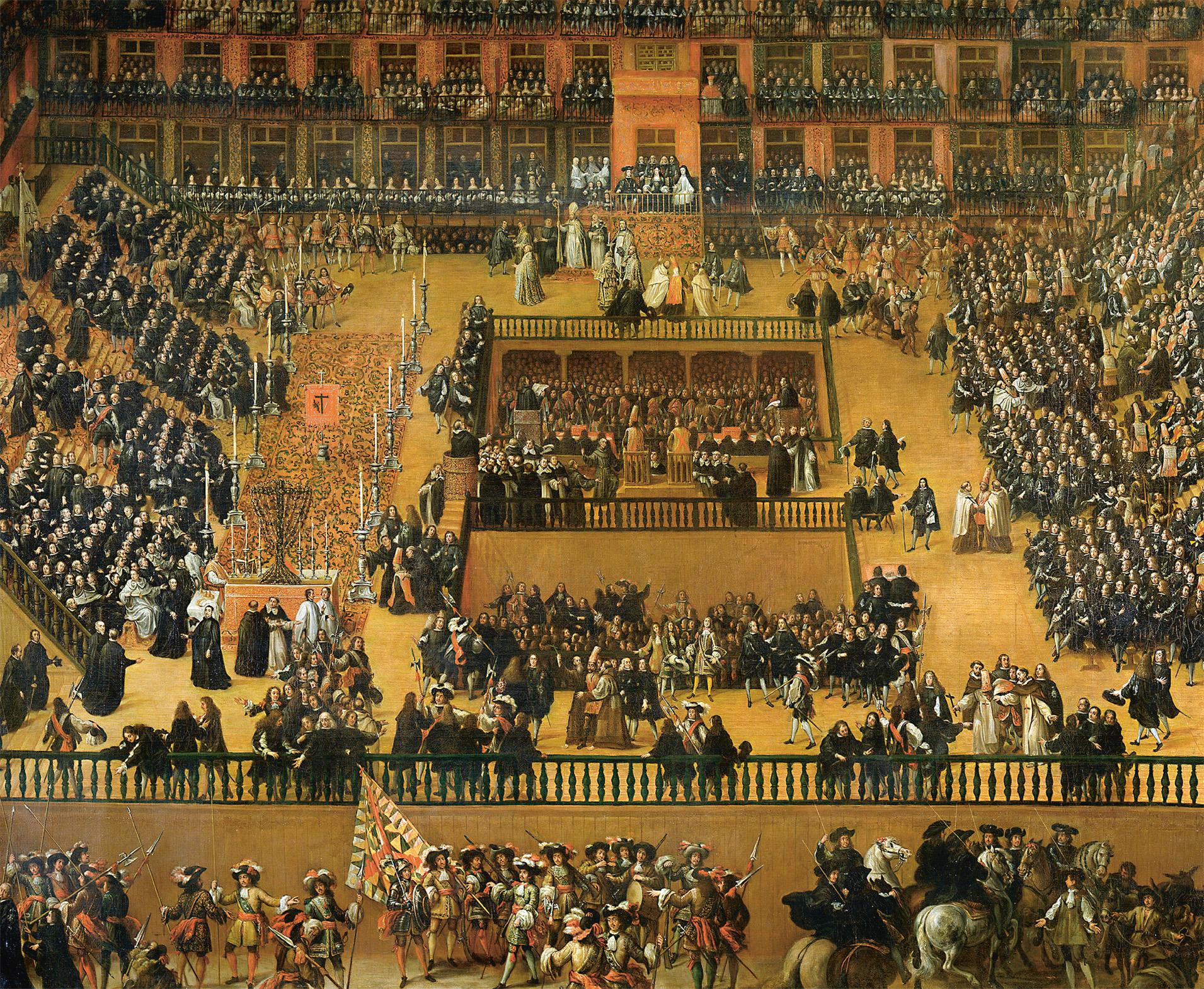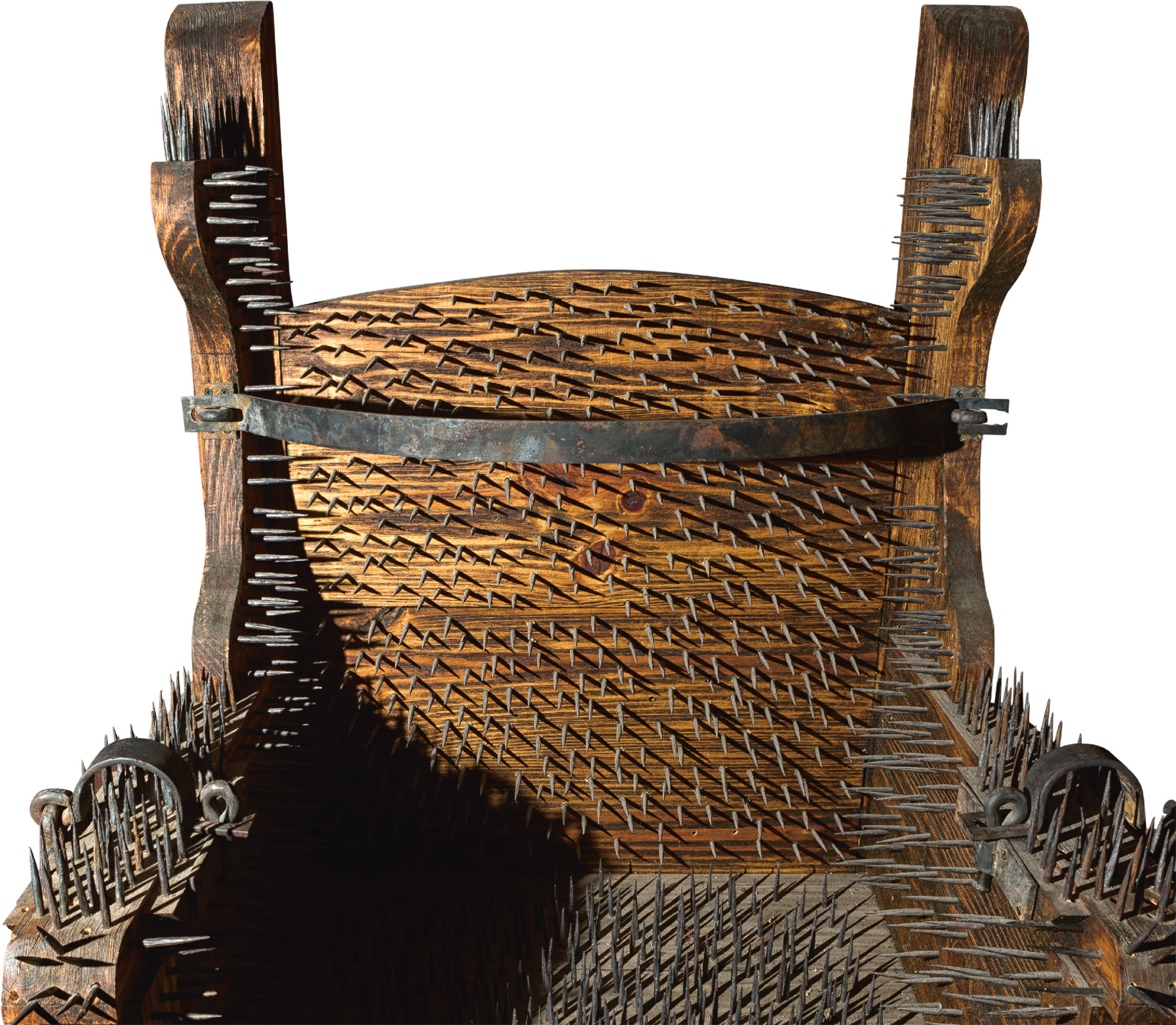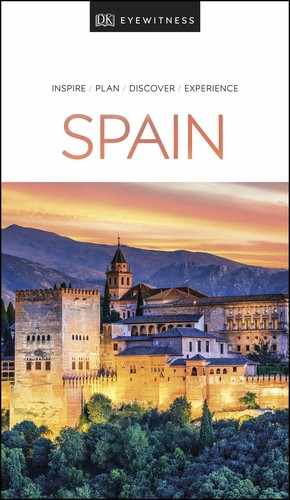g West Madrid g Contents
At the very heart of Madrid life for centuries, the Plaza Mayor has seen it all, from autos-da-fé to coronations to Christmas markets. In an ongoing tradition, residents of this grand arcaded square have long rented out balcony space to Madrileños wanting ringside seats to the city’s big events.

t The square at dusk, seen through one of its gates
Experience West Madrid

t One of the many cafés on Plaza Mayor, spilling out onto the square’s cobbles
The splendid rectangular square, lined with pinnacles and dormer windows, was started in 1617 and built in just two years, replacing slum houses. Its architect, Juan Gómez de Mora, was successor to Juan de Herrera, designer of Felipe II’s austere monastery-palace, El Escorial. Gómez de Mora echoed the style of his master, softening it slightly. The square was later reformed by Juan de Villanueva. The fanciest part of the arcaded construction is the Casa de la Panadería – the bakery. Its façade, now crudely reinvented, is decorated with allegorical paintings. The equestrian statue in the centre is of Felipe III, who ordered the square’s construction. Today the square is lined with cafés that spill out onto the cobbles, and hosts a bustling collectors’ market on Sundays, as well as occasional pageants and rock concerts.
A Historic Square
Plaza Mayor has been witness to a number of historical events. The canonization of Madrid’s patron, St Isidore, took place here in 1622, and the square was Carlos III’s first stop after arriving from Italy in 1760. But what lives on most in popular culture is the 1621 execution of Rodrigo Calderón, secretary to Felipe III, here. Although hated by the Madrid populace, Calderón bore himself with such dignity on the day of his death that the phrase “proud as Rodrigo on the scaffold” survives today.
237
The number of decorative balconies that surround the Plaza Mayor.
Experience West Madrid
The Spanish Inquisition

Francisco de Ricci’s Auto-da-fé painting of a trial held in the Plaza Mayor
The Spanish Inquisition was set up by King Fernando and Queen Isabel in 1478 to create a single, monolithic Catholic ideology in Spain. Protestant heretics and alleged “false converts” to Catholicism from the Jewish and Muslim faiths were tried, to ensure the religious unity of Spain.
AN UNFAIR TRIAL
Beginning with a papal bull, the Inquisition was run like a court, presided over by the Inquisitor-General. However, the defendants were denied counsel, not told the charges facing them and tortured to obtain confessions. Punishment ranged from imprisonment to beheading, hanging or burning at the stake. A formidable system of control, it gave Spain’s Protestant enemies abroad a major propaganda weapon. The Inquisition lasted into the 18th century.

An iron chair, a torture device used during the Spanish Inquisition
AUTO-DA-FÉ IN THE PLAZA MAYOR
The above painting by Francisco de Ricci (1683) depicts a trial, or auto-da-fé – literally, “show of faith” – held in Madrid’s main square on 30 June 1680. Unlike papal inquisitions elsewhere in Europe, this trial was presided over by the reigning monarch, Carlos II, accompanied by his queen. The painting shows a convicted defendant, forced to wear a red sanbenito robe, being led away to prison after refusing his last chance to repent and convert. Those who didn’t confess were sentenced by day, and then executed.

Insider Tip
Walk on the Wild Side
Sandemans offers 3-hour walking tours that take you to the sites where the Inquisition played out (www.neweuropetours.eu). Starting and finishing in the Plaza Mayor, you’ll be taken back to dark days of trials and torture, exorcisms and executions.
